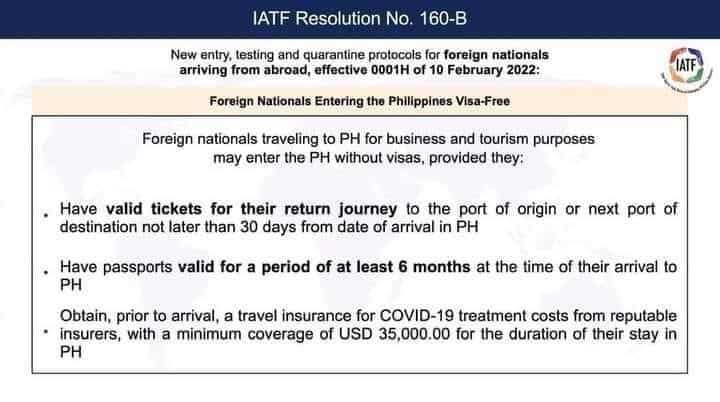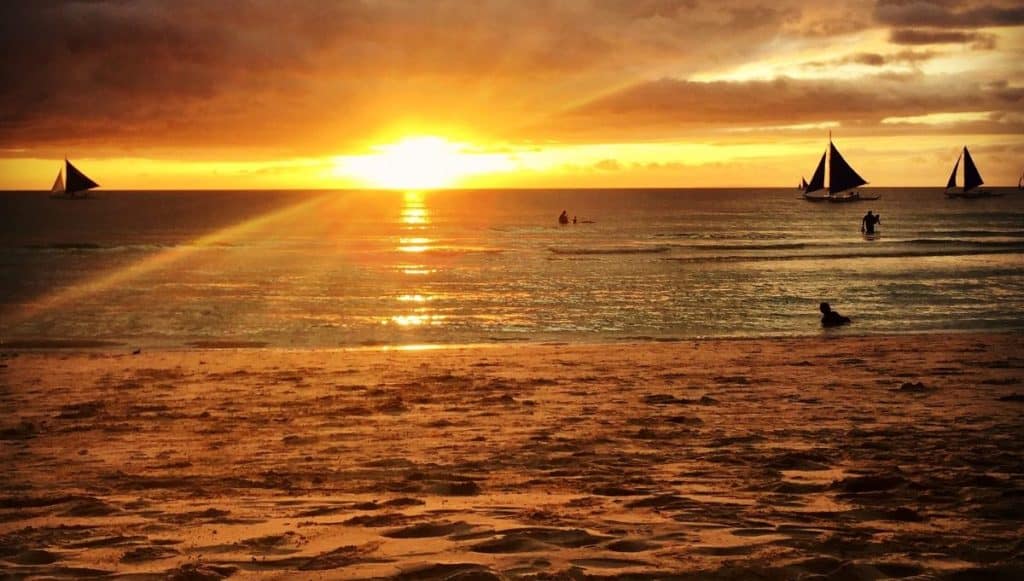Last Updated on October 25, 2024 by Ellen
(Nearly a week after this post was published, the Philippine government added a requirement for entry: health insurance against COVID-19. That information has been added to the original post.)
One of the longest border closures during the pandemic comes to an end, finally. Foreign tourism will open in the Philippines as of February 10, 2022.
As we have long written about on this blog, the decimation of the tourism market cut income of everyone near the country’s most famous vacation spot: Boracay Island.
Domestic tourism started last year, and it helped a bit over the holiday season. But then Omicron blew up any sense of a return to normalcy.
Now, with Omicron fading, fewer deaths, plenty of hospital bed space (so say reports), the country will open to fully vaccinated foreign tourists — without quarantine — and with a negative COVID test.
There are two more requirements.
Foreign tourism opens in Philippines
The lead sentence in the government ‘news report’ about opening borders to foreign tourists reads:
The country’s upcoming reopening to foreign leisure travelers would restore jobs lost and businesses forced to shut down during the pandemic, the Department of Tourism (DOT) said Friday.
Philippine News Agency
This is simply joyous news to everyone I know who lives in the Boracay region – and in so many other areas of the Philippines. (And over two years, I’ve come to know a good number of people.)
The government ‘news report’ talks about the requirements for vaccinated foreigners on a tourist visa.
Many ‘regular’ news reports I’ve seen miss two of the requirements.
New requirements for foreign tourism in the Philippines
Requirement #1: Negative COVID test
Visitors need a negative RT-PCR test within 48 hours of departure from country of origin. No quarantine!
This seems common – many countries require this.
And then, on an honor system, foreign tourists need to self-monitor for COVID symptoms.
Requirement #2: Onward travel
This is an extremely important point for slow and retired travelers on tourist visas without rigid itineraries, and not always mentioned in news reports.
What the heck is onward travel proof? A plane ticket out of the country, either back from where you came (most tourists use round-trip tickets) or an airline ticket to your next destination.
Related: How to shortcut pesky proof of onward travel
The ‘Related’ link above goes into greater detail about how to handle that requirement as a full-time traveler with an open itinerary.
This is new for the Philippines. When we arrived in November 2019, we were not required to show proof of onward travel.
Requirement #3: Vaccination proof
Travelers must carry proof of vaccination at all times. This is probably standard practice in a lot of countries, so I read, anyway. But most news reports skipped over this requirement.
I can tell you here in Malay, Aklan, on the mainland and on Boracay, an increasing number of places require vaccination cards. Everything from public transportation to government building entry, and public markets to phone stores.


You must have an official, globally recognized vaccination card, such as the World Health Organization certificate. (And it’s up to private businesses to track you with a QR code, as pictured above.)
And what the hell is an official vaccination card?
It is similar to the old yellow cards travelers used to carry for proof of vaccination against things like Yellow Fever. (We still carry those, too.)
Related: How to get a WHO vaccination card (*for expats jabbed in the Philippines)
Do not leave the country where you were jabbed without getting this WHO card.
Aside from possibly not being to get on the plane or into a country, you won’t be able to convert your local vaccination proof to international proof once you leave the country where you were immunized.
No current vaccination/booster limit
At the moment, there are no vaccination time limits, unlike Israel, which puts a clock on the time you get jabbed (and/or boosted) and your booster.
But we all know the pandemic isn’t exactly over – and so I would venture to guess this is likely to change in the future. Another important reason to get your vax and booster shots on a globally recognized certificate.
Requirement #4: Health insurance for COVID-19
This requirement was added five days before the country was set to open up to foreign tourists. Incoming international visitors on tourist visas must show proof of health insurance coverage against COVID-19.
Tap the government’s infographic for details, or visit the government’s updated ‘news report’ that includes the health insurance information. (And other requirements, as well.)

Now, this health insurance requirement seems to be becoming more common in counties around the world – especially in developing countries where budget travelers like us tend to roam.
Thankfully, at this point, we appear to be ‘grandfathered in’ since we have been in the Philippines for the entire pandemic.
Requirement #5: Six months left on your passport
The last requirement is common – even before the pandemic.
You need a passport with at least six months left before it expires.
So grateful for our friends
Foreign tourism opening up in the Philippines is the best news possible for so many people we know. From trike drivers, to paraw (sailboat) crew, from dive instructors to hotel owners, and every single job you can think of in between.
Our friends in Malay, Aklan, Philippines, will once again be able to earn money with dignity. Of course, it’s going to take a long time yet before tourism reaches pre-pandemic levels.
But here’s to hoping there are many foreigners chomping at the bit for ‘revenge travel’. I know I sure am. 🙂
This post was updated with new information on February 6, 2022.
Thanks for reading, “Foreign tourism opens in Philippines.”

